In 1898, the steamship Valdivia left Hamburg for a nine month scientific voyage to the Atlantic, Indian and Great Southern oceans [map]. Known as the German Deep-Sea Expedition, the mission was led by Leipzig University Professor of Zoology, Carl Chun and investigated chemical, zoological and physical characteristics encountered in the oceans during the voyage.
The Valdivia was equipped with state of the art biological and chemical laboratories, a first-class scientific library and ample storage space for marine specimens collected while at sea. With these specialist ship fittings and overall expedition objectives as well as vessel size, the Valdivia resembled the famous HMS Challenger from the 1870s, which had essentially established oceanography as a scientific discipline.
And like the Challenger expedition, the German Deep-Sea Expedition gave rise to an extensive series of post-voyage scientific publications. Professor Chun contributed a book on cephalopods (with a corresponding illustration/photograph atlas) to a multi-volume work called 'Wissenschaftliche Ergebnisse der deutschen Tiefse eexpedition auf dem Dampfer Valdivia' (From the Depths of the World Sea: Descriptions of the German Deep Sea Expedition).
In 1975, the Israel Program for Scientific Translations (in association with the Smithsonian Institution) arranged for the publication of the Professor Chun cephalopoda volumes in English for the first time.
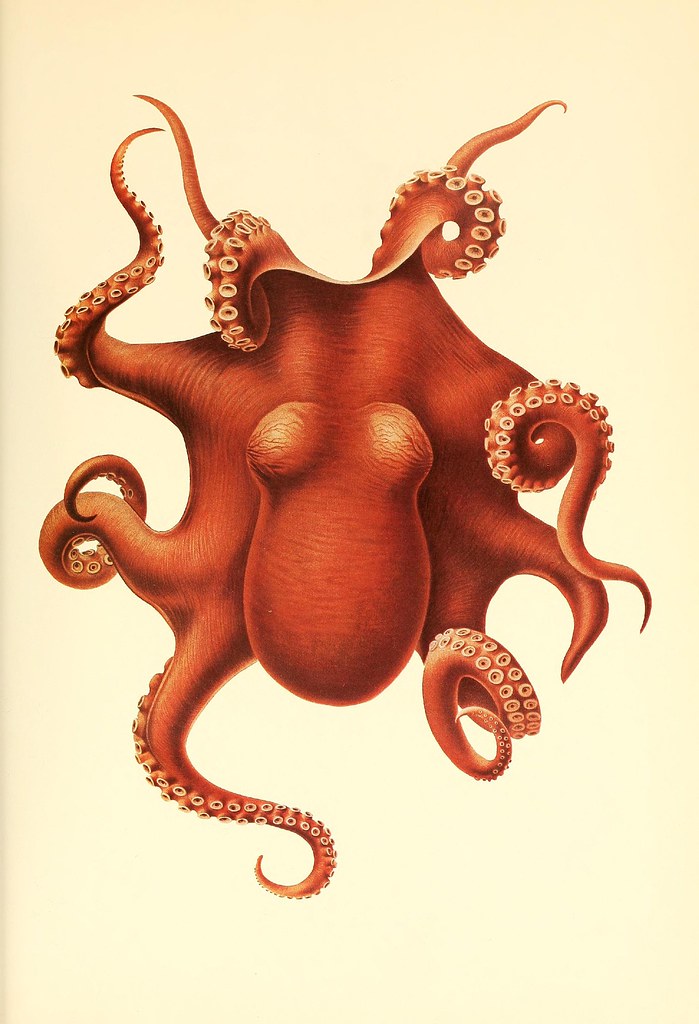
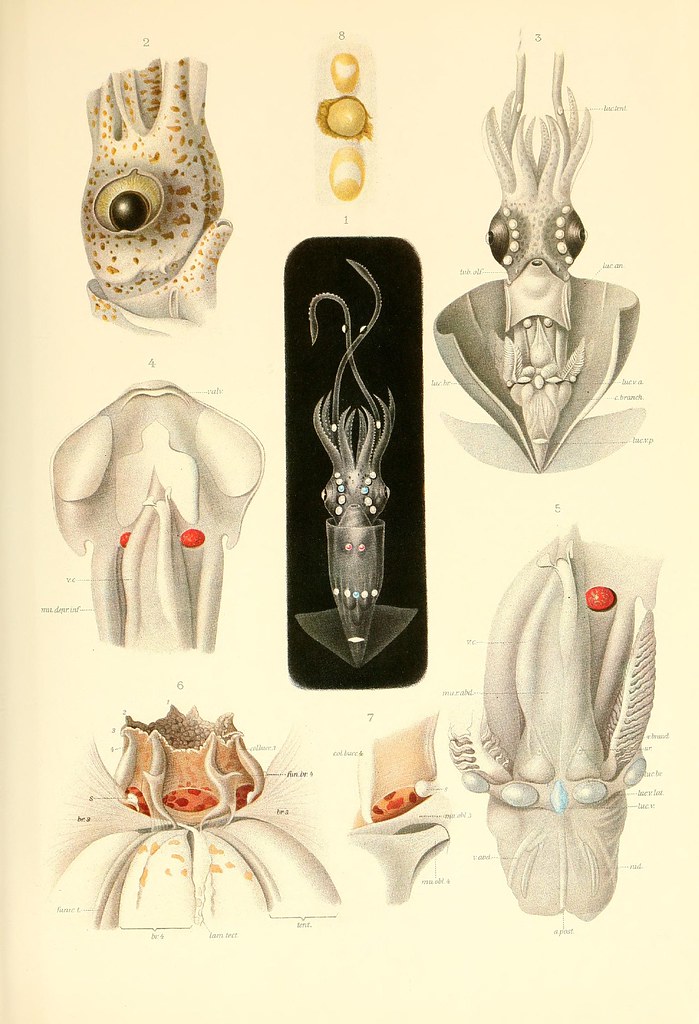
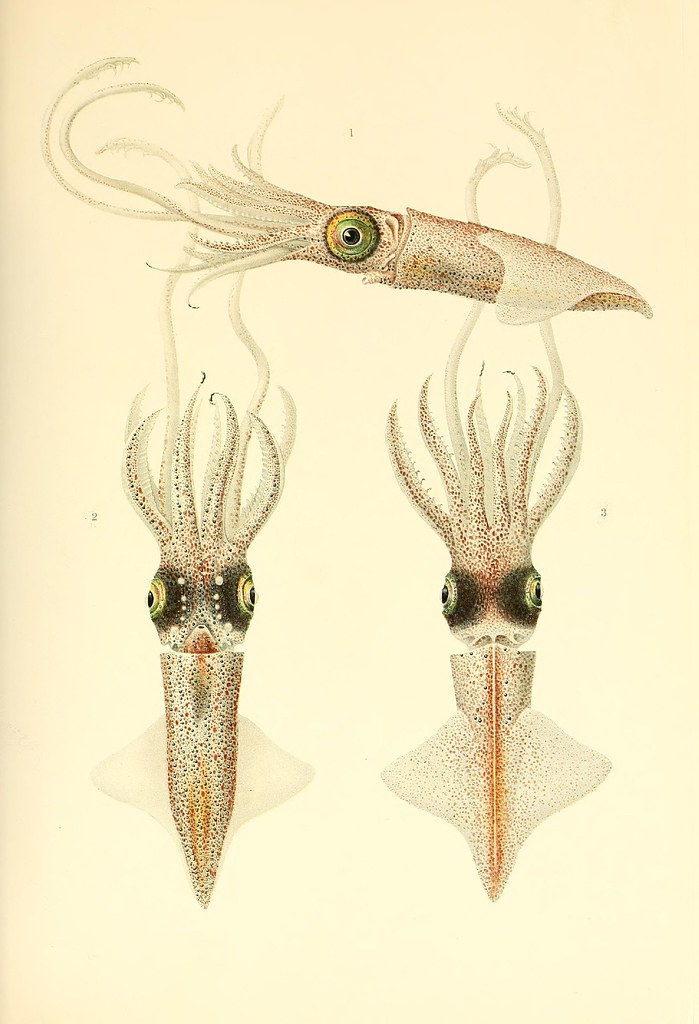
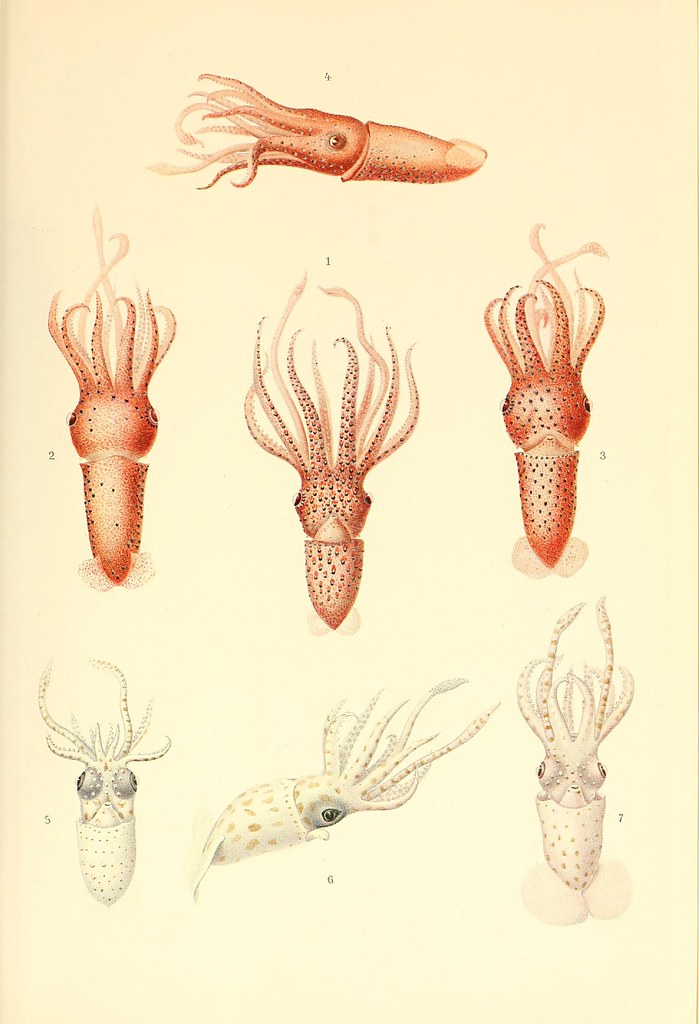

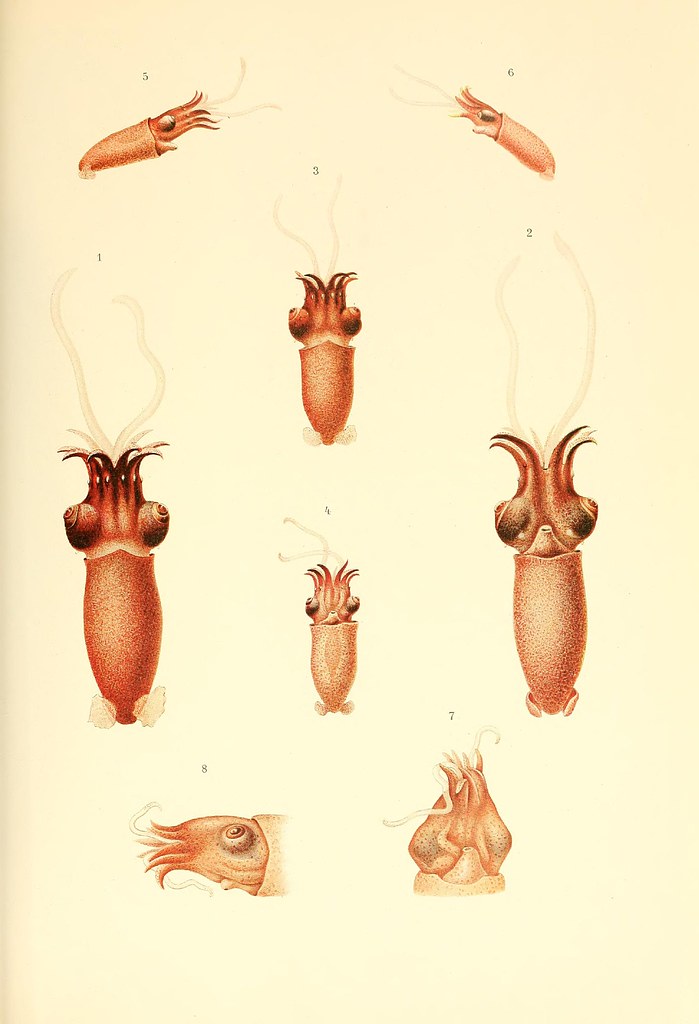
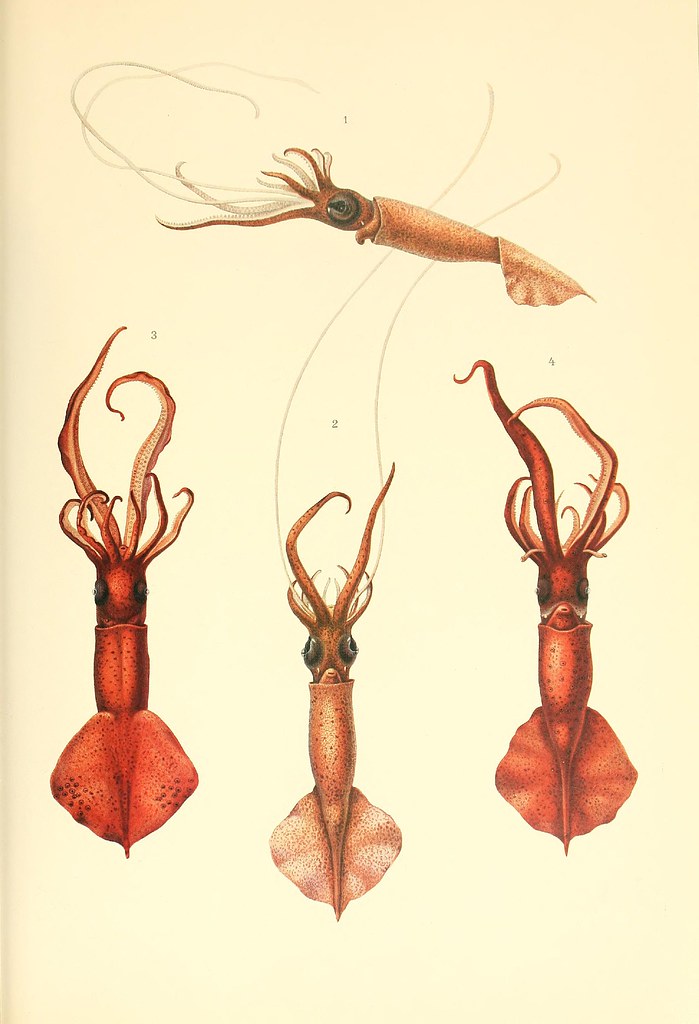

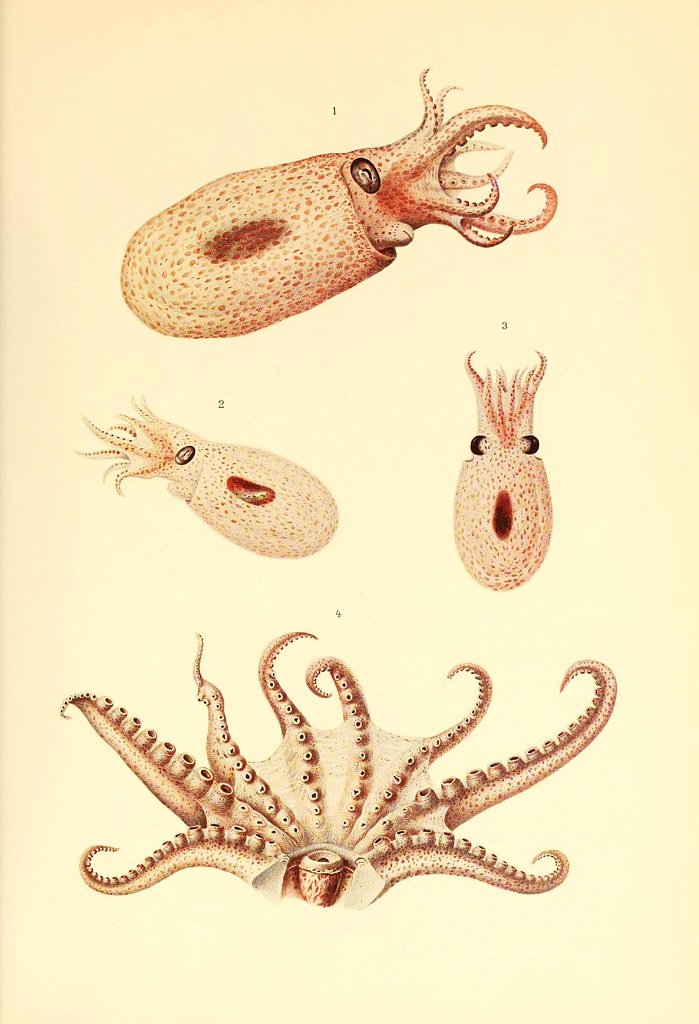
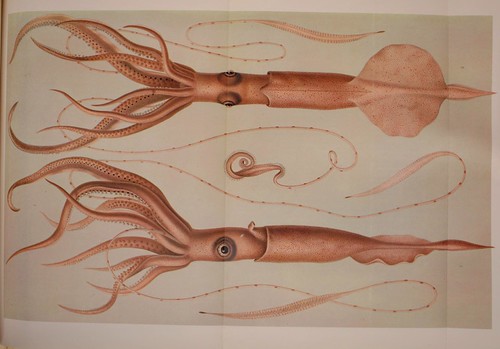
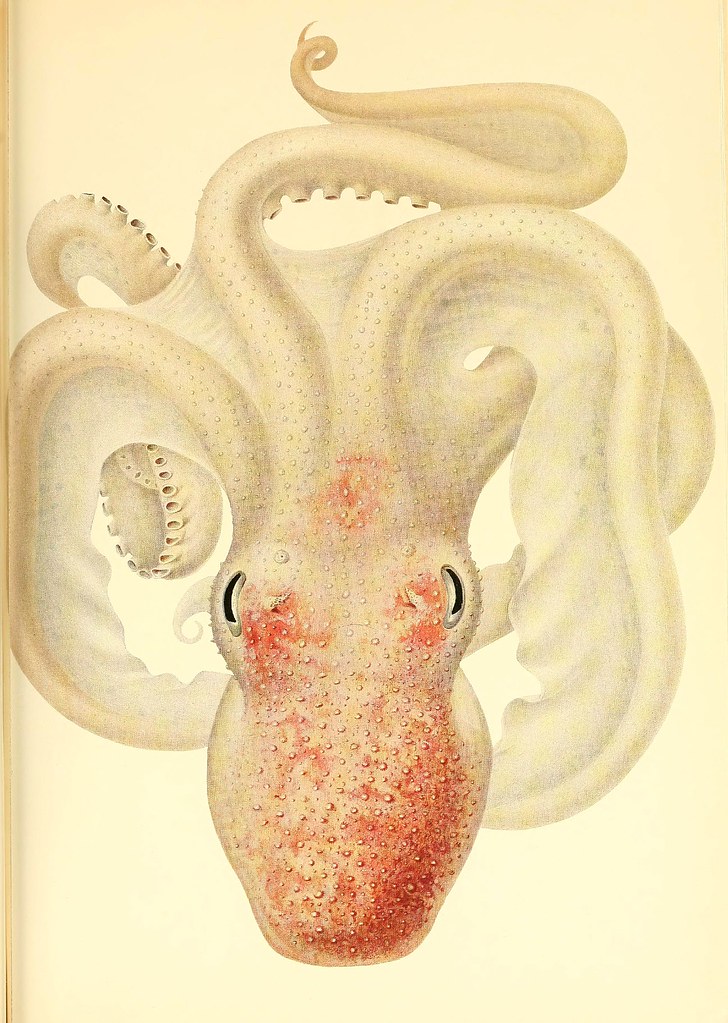

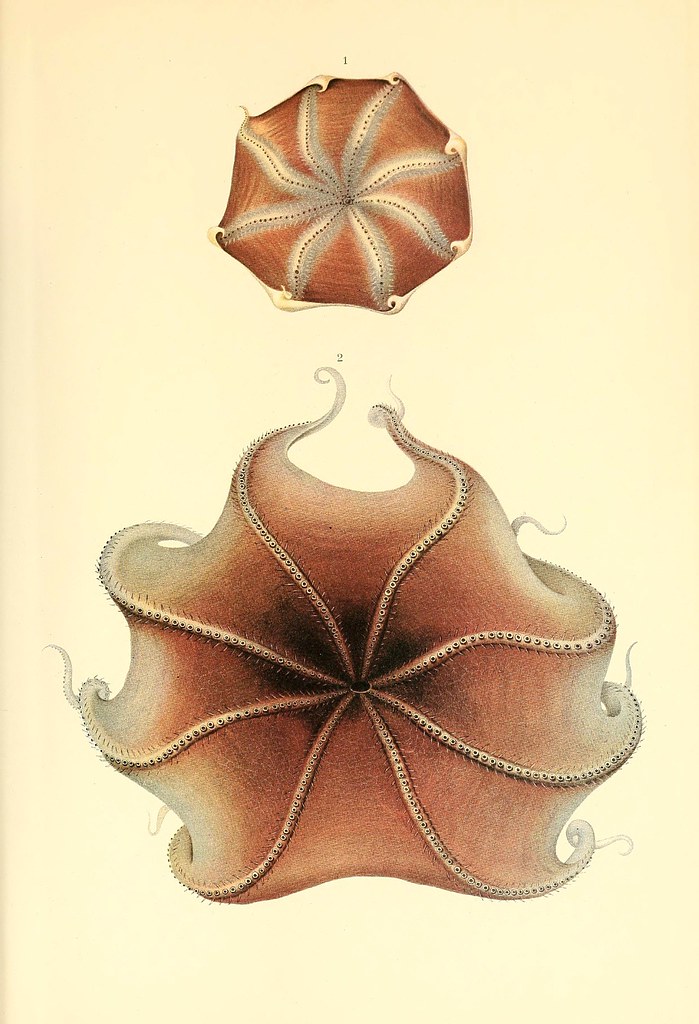
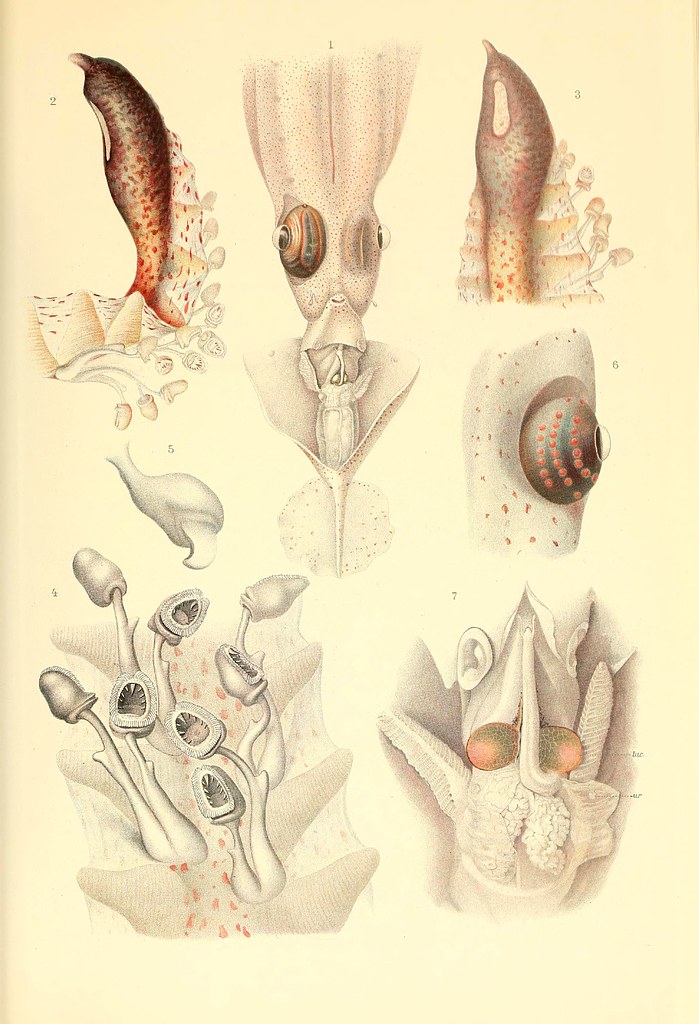
(tentacle club, glandular knob, olfactory tubercule, eye, mantle complex)
"The Cephalopoda is an ancient and very successful group of the [phylum] Mollusca. Cephalopods have been among the dominant large predators in the ocean at various times in geological history. Two groups of cephalopods exist today: The Nautiloidea with a few species of the pearly nautilus, and the Coleoidea, containing the squids, cuttlefishes, octopods and vampire squids, which is represented by about 700 species.
Cephalopods are the most active of the molluscs and some squids rival fishes in their swimming speed. Although there are relatively few species of living cephalopods, they occupy a great variety of habitats in all of the world's oceans. Individual species are often very abundant and provide major targets for marine fisheries. [..]
Characteristics:
-A funnel derived from the molluscan foot [..]
-Circumoral arms that are derived from the molluscan head [..]
-Chitinous beaks
-shell
-image-forming eyes"
The images for this post were sourced from: 'The Cephalopoda Part I: Oegopsida Part II: Myopsida, Octopoda Atlas' by Carl Chun, 1910 {1975 reprint}, online at the Biodiversity Heritage Library (there's a small drop-down menu to toggle between atlas and text).
Alternative versions are available from the Internet Archive.
- The National Oceanic and Atmospheric Administration web exhibit site offers a sampling of page views from the German Deep-Sea Expedition publications, as well as huge downloadable pdf versions of the series.
- Cephalopoda at the Tree of Life web project and wikipedia.
- The Octopus News Magazine Online.
- Professor Carl Chun biography IN: 'Exploring Polar Frontiers: a Historical Encyclopedia' by William James Mills, 2003.
- ALSO SEE :- Neapolitan Cephalopods ::: Mollusca ::: Icones Zootomicae.



















13 comments :
You had me at "Hello". That first image is magnificent..
Let me just tell you this is my most favorite post of yours EVER!
thanks for this very informative post! It's great how you add so many links to the great images you find.
When you find yourself posted on BibliOdyssey, you know you have finally arrived.
Another beautiful array of images! And a timely one, given the recent surge of discussion about their intelligence. (I'm sure some cephalopods are very smart, others less so, but this isn't something that can make much sense through an anthropocentric lens.)
On a recent visit, my sister couldn't help noticing the back cover of Seba's Cabinet of Natural Curiosities (detail from this image). Cephalopods are very strange and arresting creatures, with an uncanny appearance somehow.
nice! these are some amazing images.
PK,
Total ROCKAGE - (and squidage!)
VR/
Joe Moran
Whoa! Biblios' greatest hits, for sure.
So. Good. The crossectional/dissectiony illustrations get me all hot and bothered.
ого))
Wow! these illustrations are phenomenal.
very nice! its all in the detail..
greetings
Frumingelo
http://frumingelo.blogspot.com/
Love this!
Post a Comment
Comments are all moderated so don't waste your time spamming: they will never show up.
If you include ANY links that aren't pertinent to the blog post or discussion they will be deleted and a rash will break out in your underwear.
Also: please play the ball and not the person.
Note: only a member of this blog may post a comment.